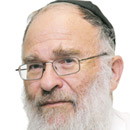Celebrating Chabad and Chassidut
THERE is a cycle of the Jewish year well known to all. We have recently completed the month of Tishrei, with its solemn commencement followed by the almost excessive feasting and rejoicing.
We then experienced the calm of Cheshvan and have now reached Kislev — the month characterised by Chanukah, which, for most Australians, also presages summer holidays. Chanukah, of course, symbolises light piercing the gloom, re-dedication of a temple that our adversaries sought to destroy but which outlasted their negativity.
For a portion of our community, Kislev has additional significance dating back to the earliest days of the Chassidic movement.
Kislev 19 marks the passing, in 1772, of the spiritual heir of the Ba’al Shem Tov, Rabbi Dov Ber, the Maggid of Mezeritch. In line with the Chassidic custom to celebrate the life of a deceased on his yahrzeit, Kislev 19 has become a major date in the Chassidic calendar.
But for Chabad, it has further significance. In 1798, the Maggid’s student, who was the first Chabad Rebbe, was imprisoned by the czarist government on serious charges of treason — he was collecting money and sending it to the lands of the Sultan (the Ottomans then occupied what is now Israel).
Following his release on Kislev 19, the failure of his opponents who had agitated to achieve his arrest was seen as a heavenly sign that the new movement could go from strength to strength. Accordingly, Chabad celebrates Kislev 19 as the Rosh Hashanah of Chassidut (a new year beginning a new era).
A similar sequence of events happened to his son and successor, the Mittler Rebbe, who was released from imprisonment on Kislev 10, 1826, another celebrated date.
More recently, Kislev again featured in Chabad history. On Rosh Chodesh Kislev, 1977, the late Rebbe Menachem Mendel Schneersohn appeared in public for the first time since his heart attack on the previous Shemini Atzeret. Like the previously described events, his recovery, too,¬† was seen as a portent of the strengthening and revitalisation of the movement — which has indeed expanded immeasurably since then.
And in that context, Rosh Chodesh Kislev has become a date for an annual gathering and celebration of the Rebbe’s shluchim (emissaries), which took on additional impetus after the Rebbe’s passing in 1994.
As a result of the unparalleled expansion of the movement and the number of outreach points and personnel in the ensuing 15 years, Rosh Chodesh Kislev this year saw some 4000 shluchim gather in New York from all corners of the world, including Australia.
Many of these shluchim spend their time living in isolation from other religious Jews and having to bear all the difficulties of providing kosher food (according to the most uncompromisingly strict standards) not only for their own households, but for all those they serve. Many living away from educational facilities have to face the problem of educating their own children in the path of Torah and Chassidut — and succeed in doing so, despite all the difficulties.
The kinus (gathering) is an opportunity to meet, socialise and compare notes, to derive spiritual strength for another year.
This year’s kinus had additional poignancy. It was almost exactly a year since the Mumbai tragedy, when Gavriel and Rivkah Holtzberg were murdered in cold blood while in the midst of selfless communal service. Yet, once again, just like after previous obstacles and tragedies in the path of Chabad, nothing has stopped the onward progress of the movement.
Literally hundreds of new initiatives have characterised Chabad in the past 12 months — and none closed because of the global financial crisis.
It must have been a magic moment when a hush settled over the banquet hall of the Troop C Armoury in Brooklyn, where 4000 gathered for the closing banquet. The traditional roll call of countries and regions, emphasising the worldwide nature of the movement, was followed by spirited dancing, a euphoric interlude.
Under red and blue lights and moving spotlights, the dancers swarmed in circles, on each other’s shoulders, in joyous ecstasy. The white-bearded danced with the dark-bearded, and even the clean-shaven. Everyone was as one.
The conference theme was based on the Hebrew year, 5770, incorporating the number 770, which is synonymous with the home of the movement and the corresponding numerical value of Chabad.
Keynote speaker Reb Yehuda Shemtov told his colleagues: “Poratzta does not only mean to spread out [physically], but to break through all barriers.” Only with each person breaking forth in his tiny corner, he explained, “will our global mission be fulfilled”.
Indeed, that is what it was all about.
May they go from strength to strength without any further tragedy until fulfilment of the messianic promise about which Chabad remind us so often.
Yossi Aron is The AJN’s religious affairs editor.


comments